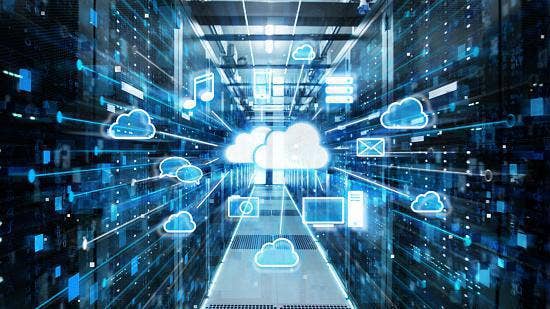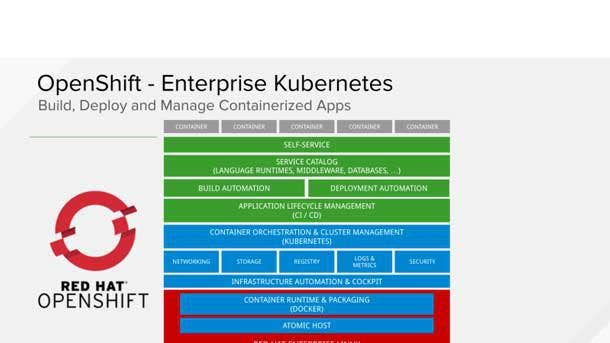IBM CEO Arvind Krishna On The Colonial Pipeline Cyberattack, The ‘Worrisome’ Chip Shortage And The Future Of AI
“We’re going to look back at this time and probably declare 2021 as the year that we entered the digital era completely,” IBM CEO Arvind Krishna says. “The pandemic, as I’ve said before, took 10 years of digital acceleration and brought it in two years, those two being ’20 and ’21.”

The news around hybrid offices, a global semiconductor shortage and a cyberattack on one of the largest pipeline operators in the country are reminders to IBM CEO Arvind Krishna that the complex problems of tomorrow his company wants to solve are arriving sooner and sooner.
“We’re going to look back at this time and probably declare 2021 as the year that we entered the digital era completely,” Krishna said this week at the IBM Think 2021 conference. “The pandemic, as I’ve said before, took 10 years of digital acceleration and brought it in two years, those two being ’20 and ’21.”
Some of IBM’s bleeding-edge technology is already here, partners tell CRN. Mark Wyllie, CEO of Boca Raton, Fla.-based IBM partner Flagship Solutions Group, uses Watson AI with Flagship capabilities to power an analytics platform for the Professional Fight League that measures fighters’ performance.
“That’s all happening right now,” Wyllie told CRN. “We’re taking in all the data in near real-time and the hope is to come out with actionable predictive stats.”
Within Merrimack, N.H.-based IBM partner Connection’s Big Blue line of business, Watson and AI leads demand for data management and insights, chief growth and innovation officer Jamal Khan told CRN.
“Companies looking at methods to collect, structure and extract value from data are the key drivers,” Khan said. “AI is still a nice to have but an area that is gaining traction, though in the early hype cycle. Modeling, data science and statistical modeling are more of the areas of growth, rather than true AI.”
And Boston-based IBM partner Ironside has invested heavily in growing with IBM’s AI and machine-learning tools through Ironside’s Rapid Viability Assessment tool, a two-week module to explore data quality and evaluate machine learning viability. “It’s a great door-opener for IBM sales executives to start the AI/ML conversation with their customers,” John Longmire, Ironside chief revenue officer, told CRN.
Here are five quotes from Krishna on where IBM is and where it’s headed in some of the more bleeding edges of technology.

‘Cybersecurity Will Be The Issue Of This Decade’
The Colonial Pipeline hack is an example of how “cybersecurity will be the issue of this decade,” Krishna said, and called on Washington, D.C., to treat cybersecurity as seriously as it has historically treated space travel.
“People are going to come after data,” he said. “I actually believe that the government should create a program that is similar to the NASA program, and it should have the same level of investment as it was to put man on the moon. And by that I mean, the same way that NASA was a public private partnership, albeit with a lot of government support, there should be a similar public-private partnership today, where you invest an equal amount of money as the inflation-adjusted NASA amount, so that we can begin to get a handle on how we do that.”
“We certainly would be happy to raise our hand,” he continued. “And people have asked me before, ‘Would you share data?’ Absolutely, as long as it’s anonymized. I don’t think it’s appropriate to take our client’s data and give it in an open way to others, but certainly we’d be happy to participate in such an effort, and I believe that will go a long way towards this. This requires a collective effort. It’s not enough for us all to do it one by one, as this weekend’s attack showed.”

‘The World Needs Quantum Computers’
To solve problems beyond the reach of computers today, IBM needs to win the battle for the computers of tomorrow.
“There are going to be problems around materials, around risk-taking, EV (electric vehicle) batteries ... modeling that out at its scale on today’s computers cannot happen. Quantum computers will give us the ability to do all of those problems. That is why we are so excited about quantum computers.”
The challenge is new science and new software to create these computers, with IBM on a roadmap to 1000-qubit (quantum bit) computers by 2023. “Fifty to 100 is where we are today,” he said.
Honeywell, Google and D-Wave are among the small number of players working on them. “A lot of people will talk about quantum simulation and quantum algorithms. I believe that within five-to-10 years you need an actual quantum computer. Just simulating a quantum computer on something else is going to give you no advantage. It’ll be very interesting to play with. Some scientists may love playing around, discovering which algorithms are possible, but there is no commercial advantage.”
“I hope they’re successful, all of us. The world needs quantum computers. That said, I predict that only a few of us are going to stay the course and get there.”

‘The Current Semiconductor Shortage Is Very Worrisome’
Much attention has focused on the automobile industry’s chip shortage. But as Krishna sees it, the shortage affects laptops and tablets for schools, server computers, consumer electronics and other areas of technology.
“‘The current semiconductor shortage is very worrisome,” he said. “It’s across the board, it’s no longer just one of those (areas). And that then makes it that people are being asked to make< what I’ll call, a really unfortunate dilemma -- which will get prioritized?”
The solution again relies on a centralized response, he said, like efforts seen in Europe and India.
“There should be a national semiconductor technology center that pushes forward on all of the R&D (research and development) including design work of chips. And that by the way it should be a national initiative -- not confined to any one player.”
Earlier this month, IBM announced the world’s first chip with 2-namometer nanoset technology. IBM is working with Intel and Samsung to manufacture the chips, Krishna said.

IBM Infrastructure Tools Will Help ‘The Sustainability Of Compute’
IBM infrastructure tools, from Red Hat OpenShift to AIOps to recently acquired Instana and Turbonomic not only help enterprises optimize their operations, but they help with less energy consumption.
Using these tools to “take advantage of all of your compute infrastructure is what we really believe is going to help in pushing it way forward in terms of the sustainability of compute. There’s so many things to do around: Is it going to be water cooled or air cooled? Where should you put your data centers? What is the source of the energy itself?”
“It used to be that we were only using 10 percent of compute power,” he continued. “By using techniques like virtualization you can up it to about 30 percent. By using techniques like containerization, it is possible to go up yourself up to 60, 70, 80 percent. We know from our history of the mainframe that we can get up to 80, 90 percent usage of the underlying compute power. Getting up to about 80 to 90 percent is probably the max you can ever do. The gap between 10 percent and 90 percent is pretty remarkable.”
“Make the compute more efficient, make the cooling more efficient, use clean energy, pack a lot more into what you can get done ... to reduce energy consumption by maybe 2x, so 50 percent. And in some cases by 90 percent,” he continued. “And if that all comes to bear out, it’d be great. And last but not least, the two nanometers we said is going to get the energy consumption down to one-fourth of what it is today.”

“There’s Going To Be A Massive Acceleration In AI”
Thirty-one percent of enterprises have deployed a form of AI, Krishna said. And as he sees it, they only 10 percent or less of what they could.
“AI will unlock almost $16 trillion of productivity by the end of this decade, by 2030,” he said. “When you back up into that and you ask the question how much of it is done, it’s a very small percentage. We can debate whether it’s 10 or 20 percent.”
“The areas where they intend to deploy it are often focused around their customer experience, which includes customer support. It’s around natural language processing. And it’s around applying AI for automation of their own enterprise or inside themselves.”
“We believe that it’s early days. We believe there’s going to be a massive acceleration in AI over the next year. And that is why you see so much news from us around AI and applying AI to really benefit the enterprise.”
IBM customer priorities have been around collaboration tools, resilience, system backups and security. And as customers scale, they don’t want to break the bank on automation, predictive capabilities and artificial intelligence (AI).
“People are worrying about, ‘How do I really make myself into an end-to-end digital enterprise? That means I’ve got to rethink my processes. I’ve got to rethink my workflows.”
“When I think about artificial intelligence. I think the same way as maybe there was electrification at the turn of the last century,” he said. “I think we can say AI is going to be what happens, and gets infused into every business this century. I think this is going to be somewhat similar in scale.”